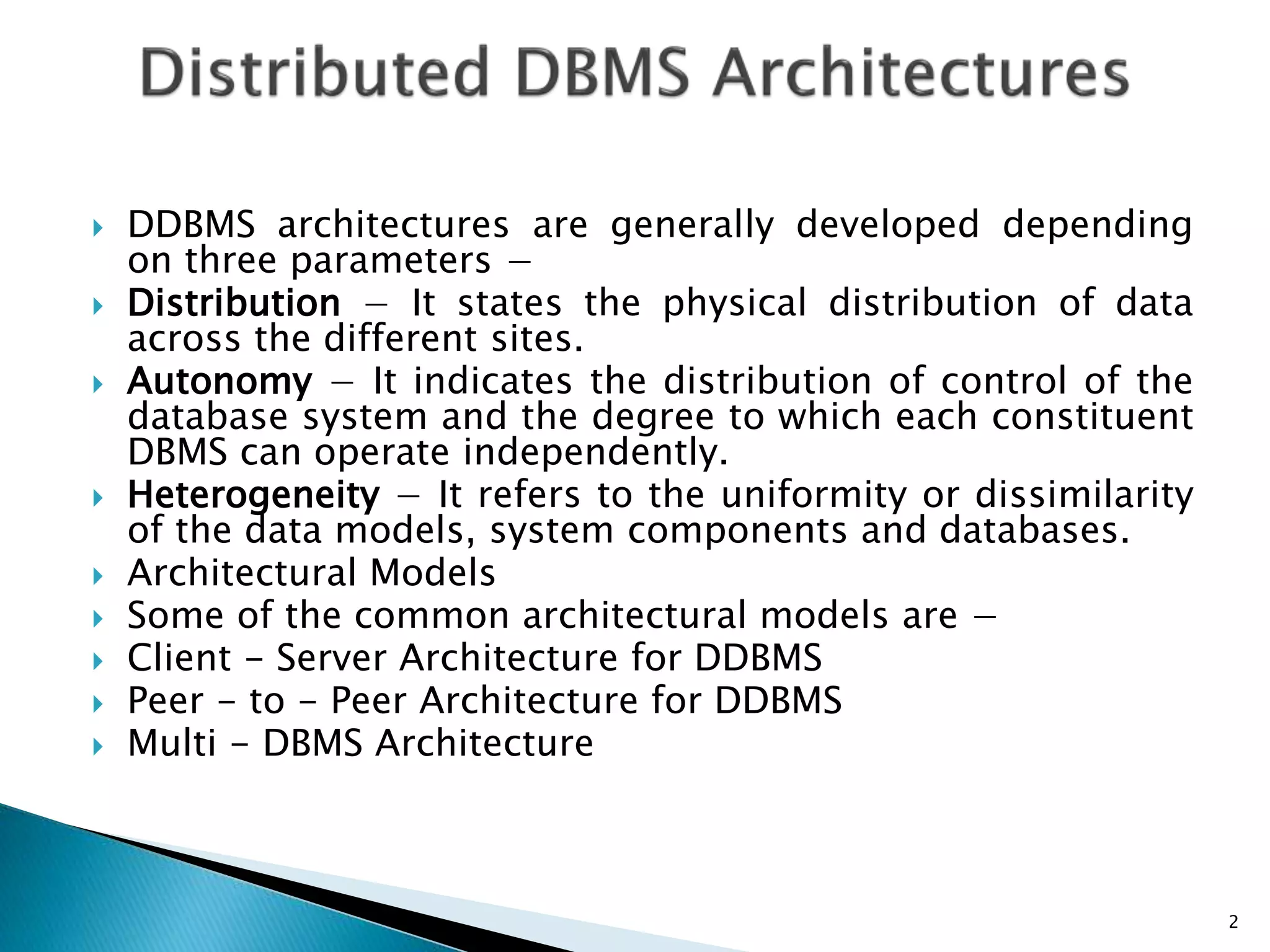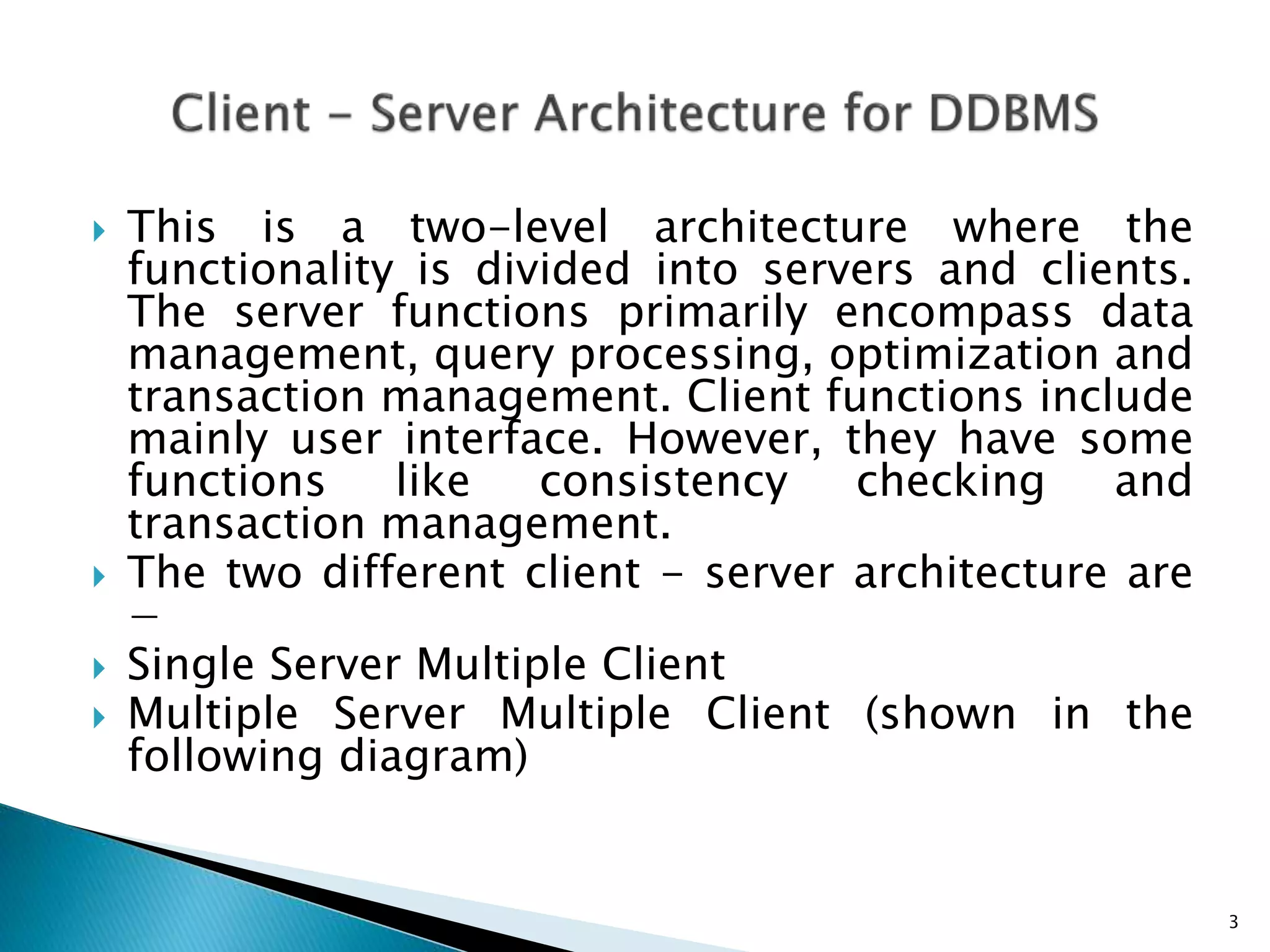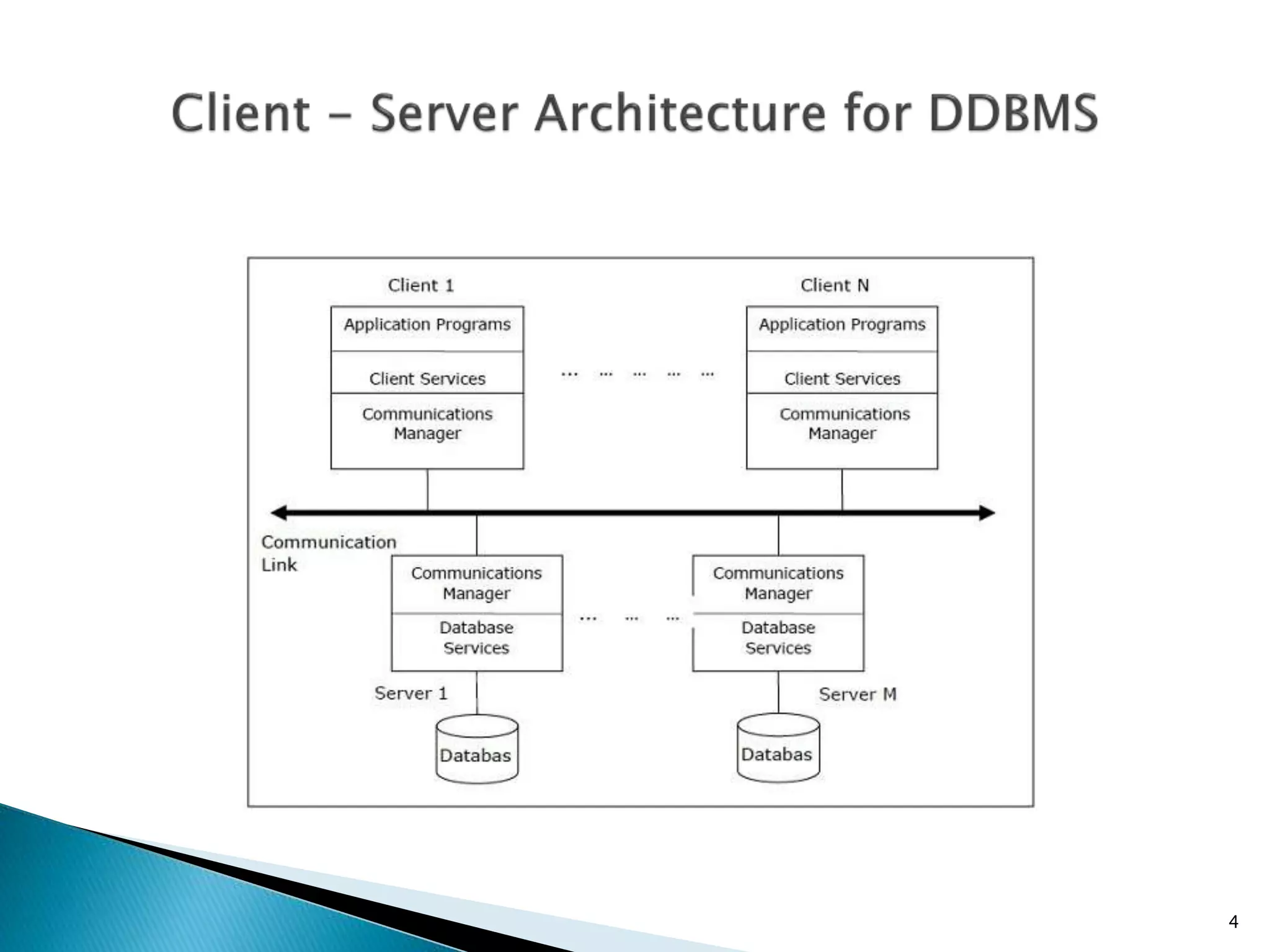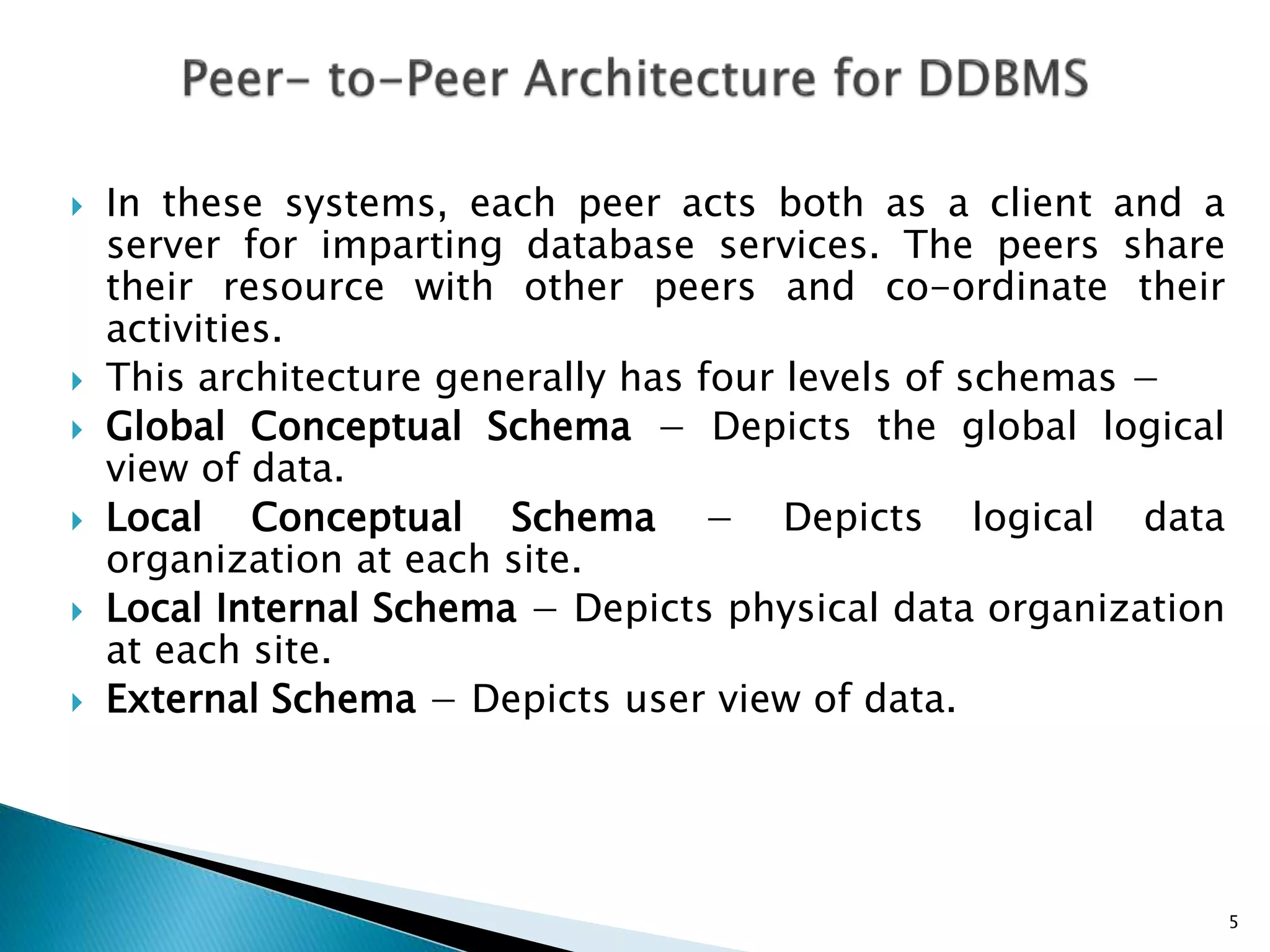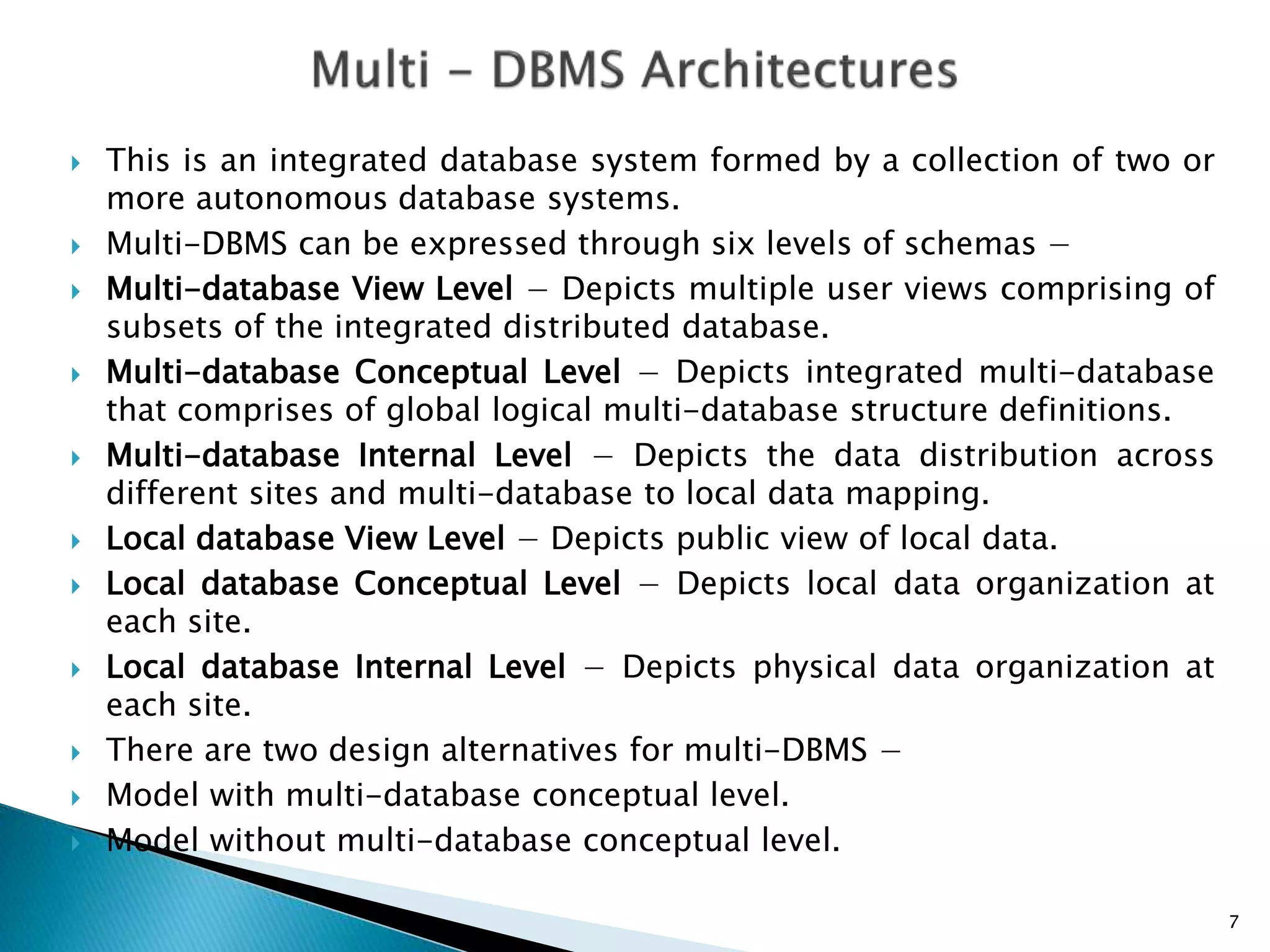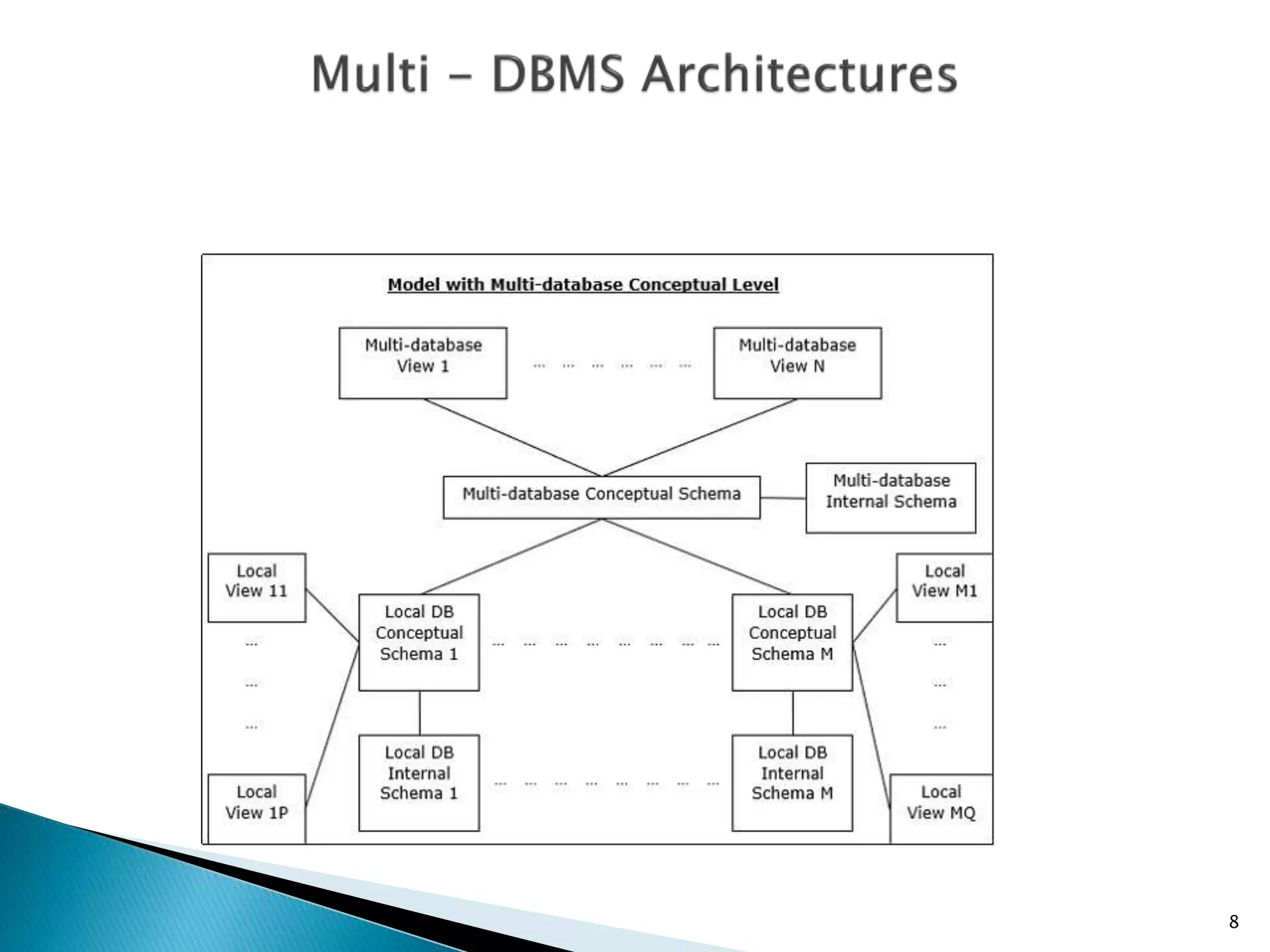The document discusses distributed database management system (DDBMS) architectures based on distribution, autonomy, and heterogeneity. It outlines various architectural models including client-server, peer-to-peer, and multi-DBMS structures, detailing their functionalities and schema levels. The multi-DBMS architecture integrates multiple autonomous databases with specific views and conceptual levels for data organization.

